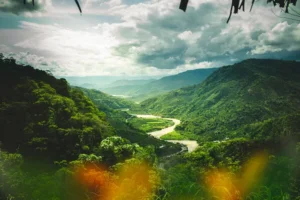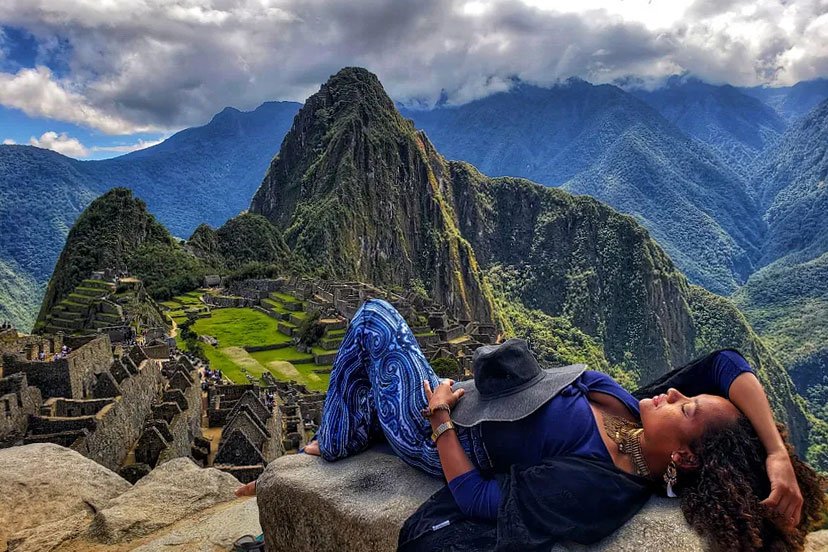7/28 was Peruvian Independence Day! 🎉
Whether you’re Peruvian or traveled to Peru, it was a day to celebrate the independence, unity, and diversity of Peru. It is also a good reminder to educate ourselves on Peruvian culture, history, and overall impact on the world. From the Andean highlands to the coastal plains, the Pacific Ocean, from the Amazon rainforest to the bustling cities, Peru is a magical place! ✨️
Whether you are descendants of the ancient Inca civilization, Afro-Peruvian communities, mestizos, criollos, or immigrants who found their home in Peru, we ALL contribute to the diversity of Peru’s cultural fabric. Take pride in our uniqueness while standing together in unity as one proud people. ✊🏽
Let the melodies of our traditional Andean, Festejo, Criollo 🎶 music resonate in our hearts, echoing the stories of our ancestors who fought for freedom and independence!
Peruvian Culture — Global Impact
Although I may be slightly biased, Peruvian culture really has made significant contributions to the world. For example, the Inca Empire existed from 1438 to 1533. In this time, Incans developed a sophisticated system of agriculture and irrigation, and their contributions to mathematics and astronomy are still used today. Peruvian culture has also influenced the development of other cultures around the world, including Spanish, African, and European cultures.


Walking through Macchu Picchu, you are transported back in time to one of the strongest empires of the Americas in human history. You can’t help but feel chills down your spine when you first glance at the Incan face etched into the mountainside and walk through the gates of the Incan Empire.
The Inca Empire was the largest empire in the Americas at the time of its conquest by the Spanish. It stretched from what is now southern Colombia to central Chile, and it included over 12 million people. It was one of the most advanced civilizations in the Americas. The Incas built a vast empire that stretched from the coast of Ecuador to the central Andes of Chile. They developed a sophisticated system of agriculture, irrigation, communication system, and roads. The Incas were also skilled engineers and architects, and they built many impressive structures, including but not limited to Machu Picchu.
Machu Picchu was an especially difficult feat to pull off as it is located on a high mountain ridge, at an altitude of over 2,400 meters (7,900 feet). This made it difficult to transport materials and build a well-designed city, with a grid-like street plan and a variety of structures, including temples, palaces, and agricultural terraces. The design of Machu Picchu reflects the Incas’ understanding of astronomy, engineering, irrigation systems, and urban planning. The Incas also had a rich culture that was a blend of indigenous Andean traditions and elements of the cultures they conquered. They had a sophisticated religion, a beautiful art tradition, and a rich mythology.


Moreover, the Quechua language is a descendant of the Proto-Quechuan language, which was spoken in the Andes region of South America as early as 1500 BC. The Incas adopted the Quechua language and made it the official language of their empire. They spread the language to other parts of their empire, which helped to make it the most widely spoken language in the Andes region today. Quechua is now spoken by millions of people around the world, and it is one of the most important indigenous languages in the Americas.


Additionally, the Amazon rainforest is the largest rainforest in the world, and it is located in part of Peru. The Amazon rainforest is home to a diverse range of plants and animals, including many species that are found nowhere else in the world. The rainforest is also an important source of water for the people of Peru.
I had the pleasure of staying with a local family in the lungs of the planet while taking in some of the purest oxygen and magnificent views from pink dolphins to sloths to rainbows over Amazonian beaches.
Moreover, within the Amazon forest is the world’s medicine: Peruvian traditional medicine is based on the use of plants and herbs, and it has been used for centuries to treat a variety of ailments. Peruvian traditional medicine is now being studied by scientists all over the world, and it has the potential to provide new treatments for many diseases. Due to its rich and diverse flora, the Peruvian Amazon is home to a large variety of medicinal plants that have been utilized for millennia to treat a wide range of health issues.
In my time in Iquitos, I actually had the privilege of seeing nature’s medicinal cabinet in action. I saw locals extract medicine as it was cut directly from a sacred tree and oozed out like fresh milk from a cows breast.


Lastly, as a bonus, as some refined taste buds may already know, Peruvians changed the game of cuisine.
For example, the Incas are believed to have been the first to cultivate potatoes all the way up in the Andes mountain range, at 3,800 meters above sea level. After the Spanish pillaged Peru, the potato traveled all over the globe, becoming one of the most important food staples in the world. Can you imagine a world without french fries? Yeah, me either 🍟 🤷🏾♀️Today, you can find over 4,000 varieties of native potatoes grown in the Andean highlands of Peru.
Additionally, Peruvian cuisine is one of the world’s top gastronomies as it is diverse and colorful just as the country itself. It is a fusion of Spanish, indigenous, and Asian influences, and it has been influenced by the country’s many different climates, immigrants, and regions. Peruvian food is now enjoyed all over the world. One of the national dishes is ceviche. Washed down with a pisco sour ceviche is a MUST try in Lima and a culinary adventure on its own!
Peru’s Economic Power & Potential
Apart from being a bucket list destination for travelers that visit all around the world, Peru is a gold mine, literally. Rich in natural resources from the ocean to the land to the forest, Peru is an economic powerhouse.
Did you know?
- Peru is a middle-income country with a GDP of $203.1 billion (PPP) in 2022.
- The economy is driven by the primary sector (mining, agriculture, and fishing), which accounts for about 40% of GDP.
- Peru’s exports totaled $46.8 billion in 2022, and its imports totaled $42.3 billion.
- The secondary sector (manufacturing, construction, and utilities) accounts for about 30% of GDP, and the tertiary sector (services) accounts for about 30% of GDP.
- Peru’s economy is growing at a moderate pace, with GDP growth of 2.4% expected in 2023.
- In 2021, Peru’s poverty rate was 25%, down from 52% in 2005.
- The unemployment rate in Peru was 7.7% in 2022.

Furthermore, Peruvian exports consist of a wide variety of products, but the top exports are:
- Copper: Peru is the world’s second-largest producer of copper, and copper is its most important export. In 2022, Peru exported $19.2 billion worth of copper.
- Gold: Peru is also a major producer of gold, and gold is its second-most important export. In 2022, Peru exported $7.7 billion worth of gold.
- Mineral fuels including oil: Peru is a producer of oil and natural gas, and these products are its third-most important export. In 2022, Peru exported $6.2 billion worth of mineral fuels including oil.
- Fruits, nuts: Peru is a major producer of fruits and nuts, and these products are its fourth-most important export. In 2022, Peru exported $4.7 billion worth of fruits and nuts.
- Copper ore: Copper ore is a processed form of copper, and it is Peru’s fifth-most important export. In 2022, Peru exported $3.3 billion worth of copper ore.
But that’s not all! 😉 Other important exports of Peru include:
- Fishmeal: Fishmeal is a high-protein food made from fish, and it is Peru’s sixth-most important export.
- Fabricated metal products: Fabricated metal products are made from metal that has been shaped or formed, and they are Peru’s seventh-most important export.
- Alloys: Alloys are mixtures of metals, and they are Peru’s eighth-most important export.
- Coffee: Coffee is Peru’s ninth-most important export.
- Textiles: Textiles are made from fibers, and they are Peru’s tenth-most important export.
Peru’s exports are important to the country’s and our global economy. The main export destinations for Peru are China, Korea, the United States, Brazil, and Chile.
In conclusion, Peru has made significant contributions to the global community in a variety of fields, including archaeology, agriculture, medicine, art, music, minerals, and language. The country is home to some of the most important archaeological, spiritual, culinary, tourist, and biological sites in the world, such as Iquitos, Machu Picchu, Amazon, Lima food capital, Paracas, and the Nazca Lines. Moreover, Peru is also a major producer of agricultural products, including coffee, cocoa, and fruits.
Peru’s contributions to the global community are significant and diverse, and they continue to shape the global economy, history of humanity, gastronomy, culture, and beyond.
I highly recommend a trip to Peru ! Reach out if you need planning assistance or tips! @afrolatina_adventurer 📲✨️
Now, adding back some humbling reality, although Peru is a growing economy with a number of benefits, Peru also faces corruption related challenges, like any South American country. Despite this, the country has made significant progress in reducing poverty and unemployment in recent years. The economy is expected to continue to grow in the coming years, but the pace of growth will depend on how well the government addresses the challenges it faces.
❗️ The main challenges to the economy aren’t unique to Peru and include: political uncertainty, extreme weather events, high-interest rates, and inflation. Apart from all the riches and potential Peru has in the country, I want to see continued improved access to #reproductivehealth rights and #economicopportunities particularly for women+. I am rooting for continued investment in these laws !! ⚖️
🌟 While on the topic, consider donating to Peruvian causes that help vulnerable communities such as indigenous populations. I will be doing the same!
https://help-peru.org/
Thanks for reading this far!!! You made it out alive✨️💪🏽
🇵🇪 Viva el Perú! Comment the flag below if Peruvian or comment what place you visited or want to go to.
Reach out if you need itinerary consulting to maximize your time in Peru on your next trip! 🇵🇪
Follow my world adventures on IG 📲


